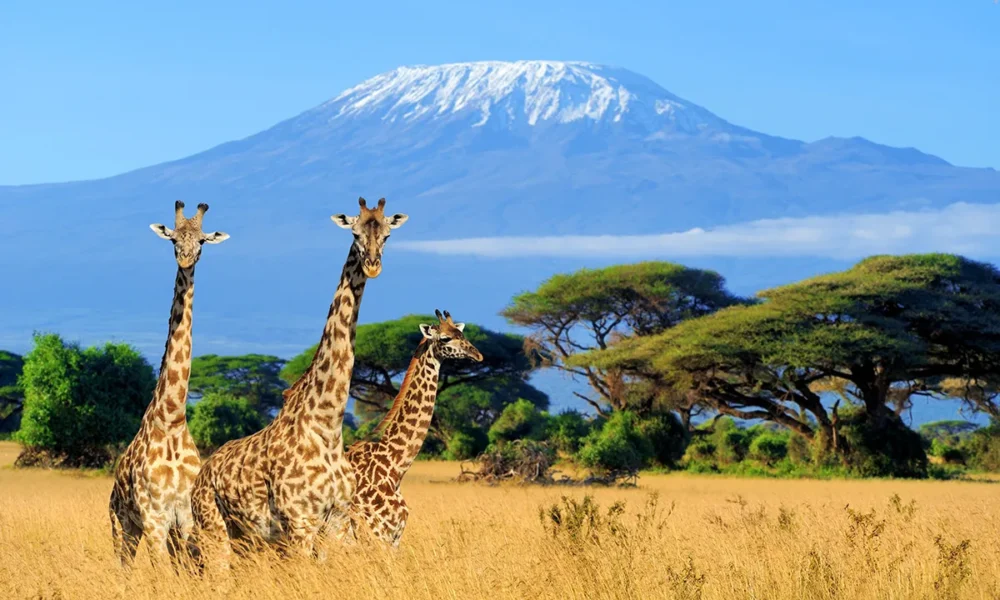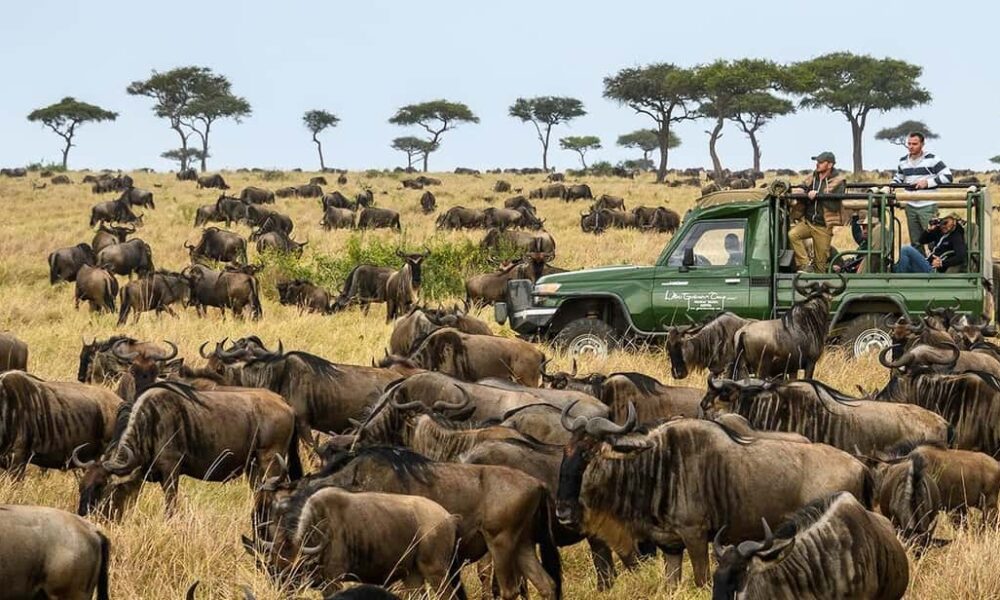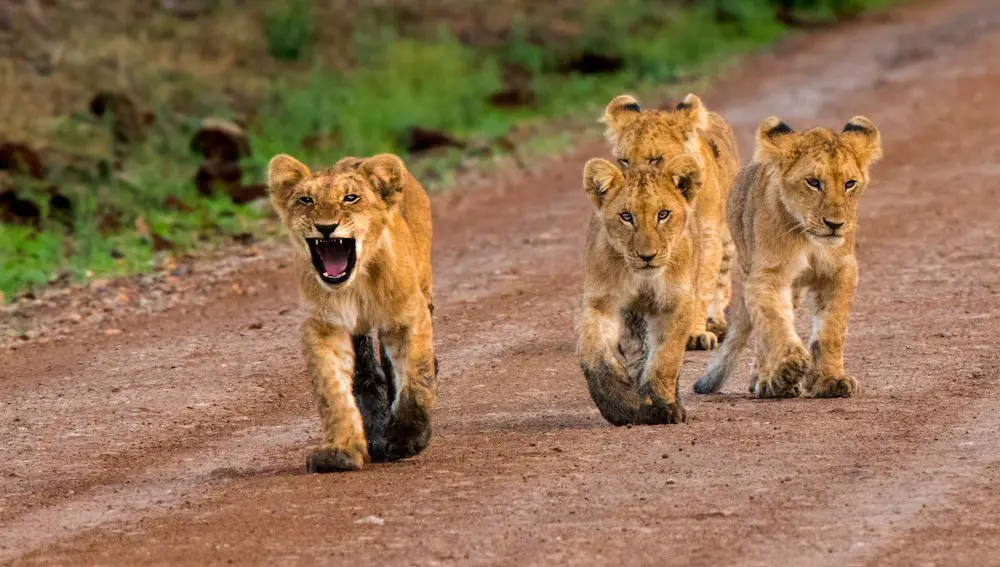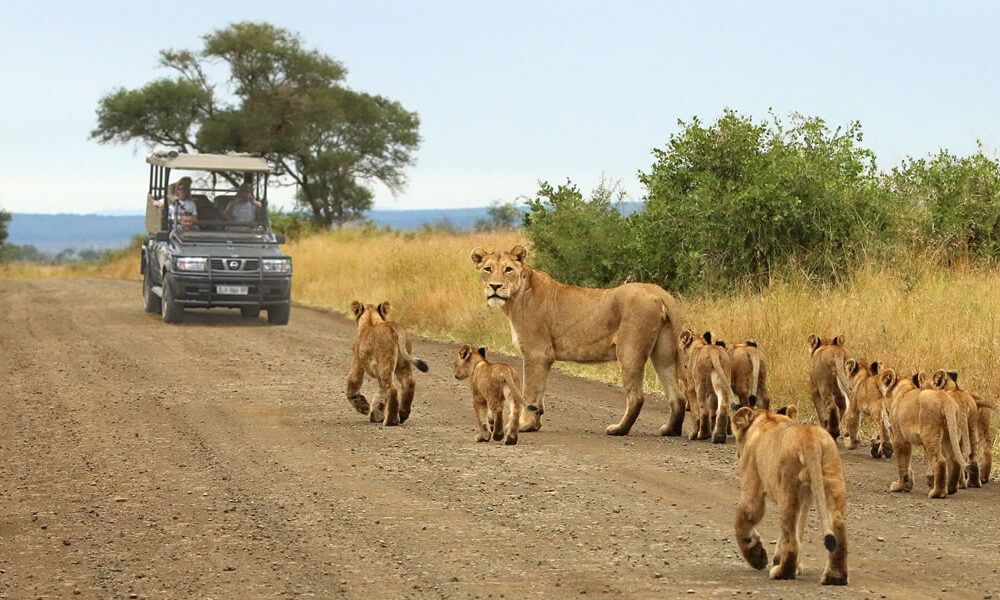
Kenya Safari: An Adventure Across the Wild
Kenya is a land of breathtaking landscapes, rich cultures, and an array of wildlife unmatched anywhere on the planet. For nature enthusiasts and adventurers, a safari in Kenya is the quintessential experience, offering opportunities to witness nature in its most raw and unspoiled form. The country boasts a number of world-renowned national parks and game reserves, each with its unique charm and diversity of wildlife. This guide explores the splendors of six iconic destinations: the Maasai Mara, Lake Nakuru, Amboseli, Taita Hills, Tsavo West, and Tsavo East.
Maasai Mara National Reserve
The Maasai Mara, often referred to as the “Mara,” is perhaps the most famous game reserve in the world. Located in southwestern Kenya, the Mara is contiguous with Tanzania’s Serengeti National Park, forming one of the most extensive and diverse ecosystems in Africa. Covering approximately 1,510 square kilometers, the Mara is home to an astonishing array of wildlife, including the Big Five: lion, leopard, elephant, buffalo, and rhinoceros.
The reserve is particularly famous for the Great Migration, one of the most spectacular natural events on the planet. Every year, over 1.5 million wildebeest, along with hundreds of thousands of zebras and gazelles, migrate from the Serengeti into the Maasai Mara in search of greener pastures. This mass movement of animals is fraught with danger, particularly at the Mara River, where crocodiles and lions lie in wait for the unsuspecting prey. Witnessing this migration is a once-in-a-lifetime experience that draws thousands of tourists from around the globe.
Aside from the migration, the Mara is a year-round safari destination, offering excellent game viewing. The reserve’s open savannahs, dotted with acacia trees, make it ideal for spotting predators such as lions, cheetahs, and leopards. Visitors can also interact with the Maasai people, learning about their traditional lifestyle and customs, which are deeply intertwined with the wildlife and the land.


Lake Nakuru National Park
Lake Nakuru National Park, located in the Great Rift Valley, is another gem in Kenya’s safari circuit. The park is named after Lake Nakuru, a shallow, alkaline lake famous for its vast flocks of flamingos that can turn the lake’s shores into a vibrant pink. Although the number of flamingos fluctuates with the water levels and food availability, seeing the birds gather in their thousands is a mesmerizing sight.
The park covers an area of about 188 square kilometers, and its landscape is varied, ranging from the lake itself to surrounding forests and grassy plains. Lake Nakuru is a sanctuary for a variety of bird species, making it a paradise for birdwatchers. In addition to flamingos, the park hosts over 400 bird species, including pelicans, cormorants, and kingfishers.
Lake Nakuru is also a haven for rhinos, and the park is one of the best places in Kenya to see both black and white rhinoceroses. The park’s other wildlife includes lions, leopards, buffaloes, giraffes, and various antelope species. The dense woodlands around the lake are particularly good for spotting leopards, which are often elusive in other parks. The scenic Baboon Cliff viewpoint offers panoramic views of the lake and the park, providing an excellent backdrop for photography.
Amboseli National Park
Amboseli National Park, located in southern Kenya near the border with Tanzania, is famous for its stunning views of Mount Kilimanjaro, the highest free-standing mountain in the world. The sight of elephants grazing against the backdrop of the snow-capped peak is one of the most iconic images of Africa. Covering an area of 392 square kilometers, Amboseli is relatively small compared to other Kenyan parks, but it offers a diverse and rich safari experience.
Amboseli is known as the “Land of Giants” because of its large elephant herds. These elephants are among the most studied in the world, and their population is remarkably well-protected. Amboseli’s elephants are often seen in large family groups, and their interactions are fascinating to observe. The park’s open plains, swamps, and woodlands provide a variety of habitats for other animals as well, including lions, cheetahs, zebras, wildebeest, giraffes, and numerous bird species.
One of the unique features of Amboseli is its swamp system, fed by underground rivers from Mount Kilimanjaro. These swamps provide a vital water source for animals during the dry season, and they also attract a wide variety of birdlife. Photographers will find Amboseli a dream destination, not only because of its wildlife but also due to the dramatic landscapes and the ever-present silhouette of Kilimanjaro.


Taita Hills Wildlife Sanctuary
Taita Hills Wildlife Sanctuary, located in southeastern Kenya, is a lesser-known but equally captivating destination. Covering an area of about 110 square kilometers, the sanctuary is part of the Eastern Arc range and is adjacent to the Tsavo West National Park. The Taita Hills are renowned for their unique biodiversity, with several endemic species of plants and animals found nowhere else in the world.
The sanctuary is home to a variety of wildlife, including elephants, lions, buffaloes, zebras, giraffes, and several antelope species. One of the main attractions of Taita Hills is the Salt Lick Lodge, an elevated hotel that offers visitors a unique opportunity to observe animals at close range from the comfort of their rooms. The lodge overlooks a series of waterholes, where animals congregate, especially during the dry season. This provides excellent opportunities for game viewing and photography.
The landscape of Taita Hills is a mix of rolling hills, open savannah, and dense forests, offering a variety of habitats for different species. Birdwatchers will find the sanctuary particularly rewarding, with over 300 bird species recorded in the area. The sanctuary’s proximity to Tsavo West makes it an ideal stop for visitors exploring the larger Tsavo ecosystem.
Tsavo West National Park
Tsavo West National Park is one of the largest and oldest national parks in Kenya, covering an area of approximately 9,065 square kilometers. The park is part of the larger Tsavo Conservation Area, which also includes Tsavo East and several smaller sanctuaries. Tsavo West is known for its dramatic landscapes, including volcanic hills, dense bush, open plains, and riverine forests.
One of the highlights of Tsavo West is the Mzima Springs, a series of crystal-clear pools fed by underground rivers from the Chyulu Hills. The springs are home to a resident population of hippos and crocodiles, and visitors can observe these animals from an underwater viewing chamber. The lush vegetation around Mzima Springs attracts a variety of bird species, making it a popular spot for birdwatching.
The Shetani Lava Flow is another geological marvel in Tsavo West, a vast field of black lava rock formed by volcanic activity thousands of years ago. The barren, rocky landscape contrasts sharply with the surrounding bush and offers a glimpse into the park’s volcanic past.
Wildlife in Tsavo West includes elephants, lions, leopards, buffaloes, and a variety of herbivores. The park is also home to some of Kenya’s last remaining populations of the critically endangered black rhinoceros. Tsavo West’s rugged terrain and dense vegetation can make wildlife viewing more challenging than in other parks, but the sense of wilderness and adventure is unparalleled.


Tsavo East National Park
Tsavo East National Park, covering an area of 13,747 square kilometers, is the largest park in Kenya and one of the largest in the world. Tsavo East is famous for its vast open plains, red earth, and large herds of elephants. The park’s elephants are often seen dusting themselves with the red soil, giving them a distinct reddish appearance.
Tsavo East is divided from Tsavo West by the Nairobi-Mombasa highway and railway, but the two parks together form one of the largest wildlife sanctuaries in the world. The park is bisected by the Galana River, which provides a lifeline for the wildlife during the dry season. The river is lined with doum palms and is home to crocodiles, hippos, and a variety of bird species.
The park’s iconic feature is the Yatta Plateau, the world’s longest lava flow, which stretches over 300 kilometers. The plateau offers stunning views of the surrounding landscape and is a reminder of the park’s volcanic origins.
Wildlife in Tsavo East is abundant and includes the Big Five, as well as cheetahs, hyenas, giraffes, zebras, and numerous antelope species. The park is also a haven for birdwatchers, with over 500 bird species recorded. Tsavo East’s remote and less-visited nature gives it a wild and untouched feel, making it a perfect destination for those looking to escape the more crowded safari circuits.

